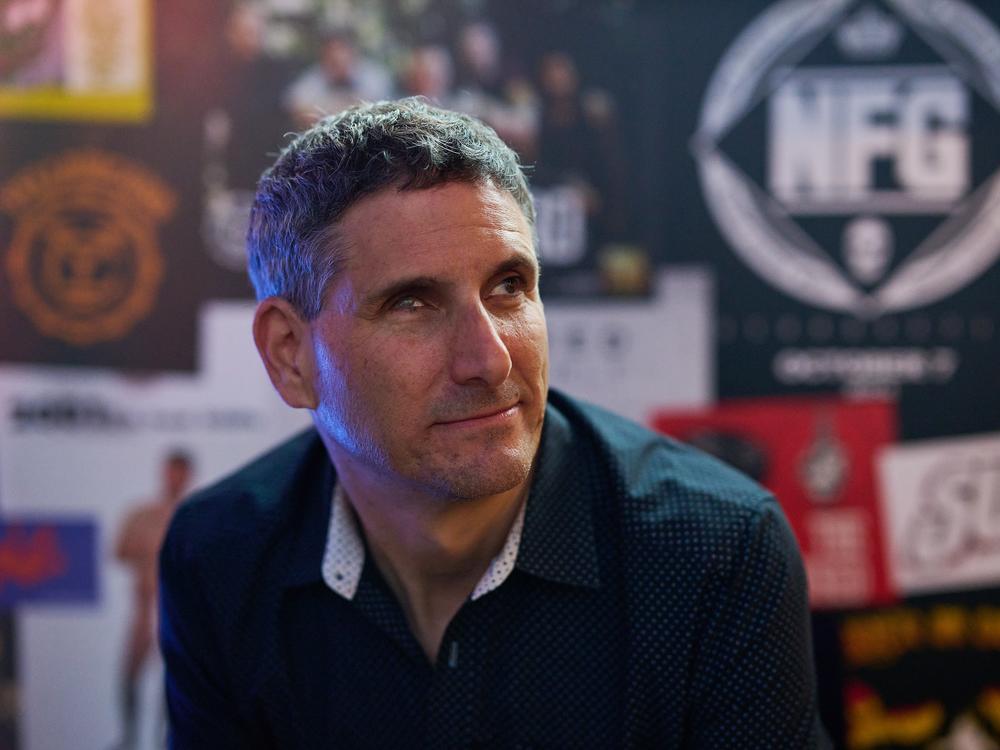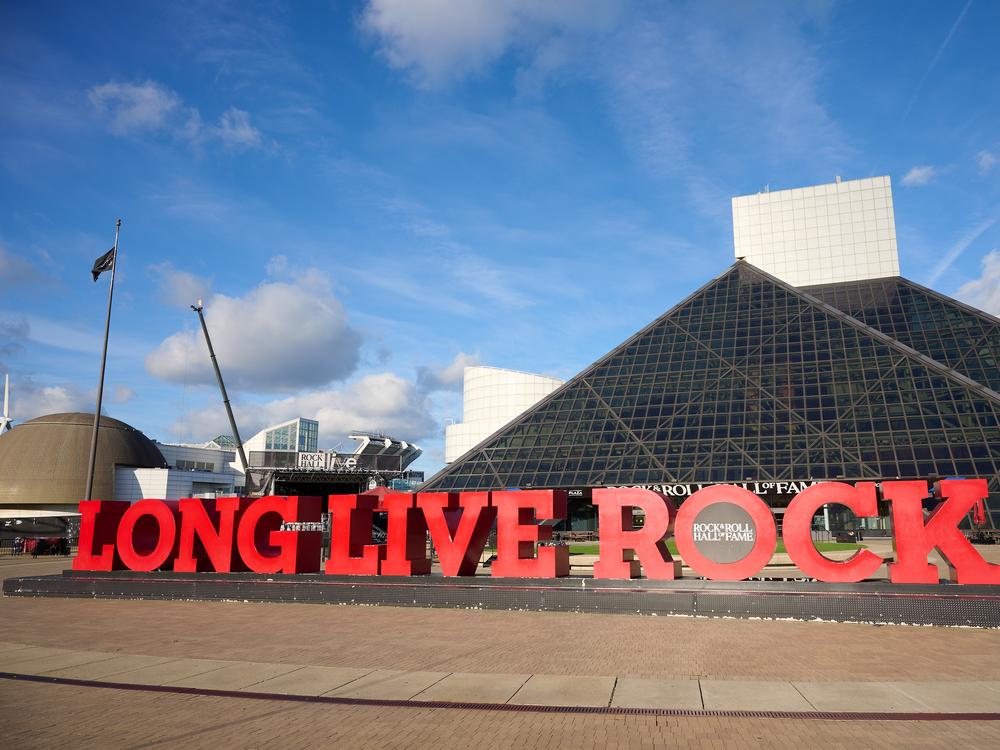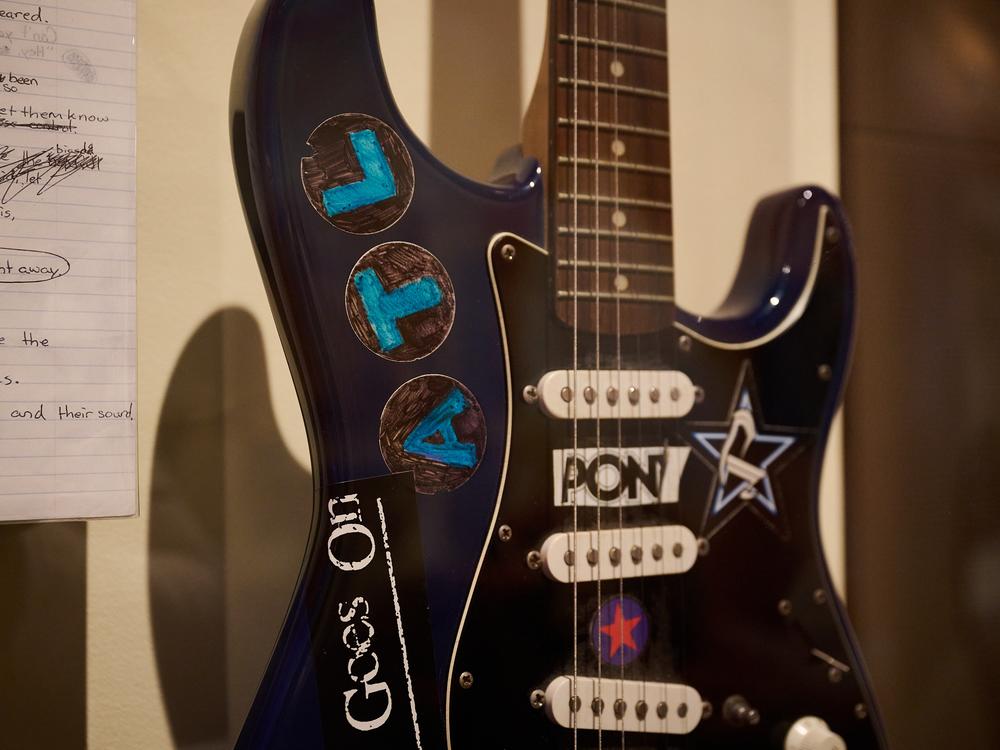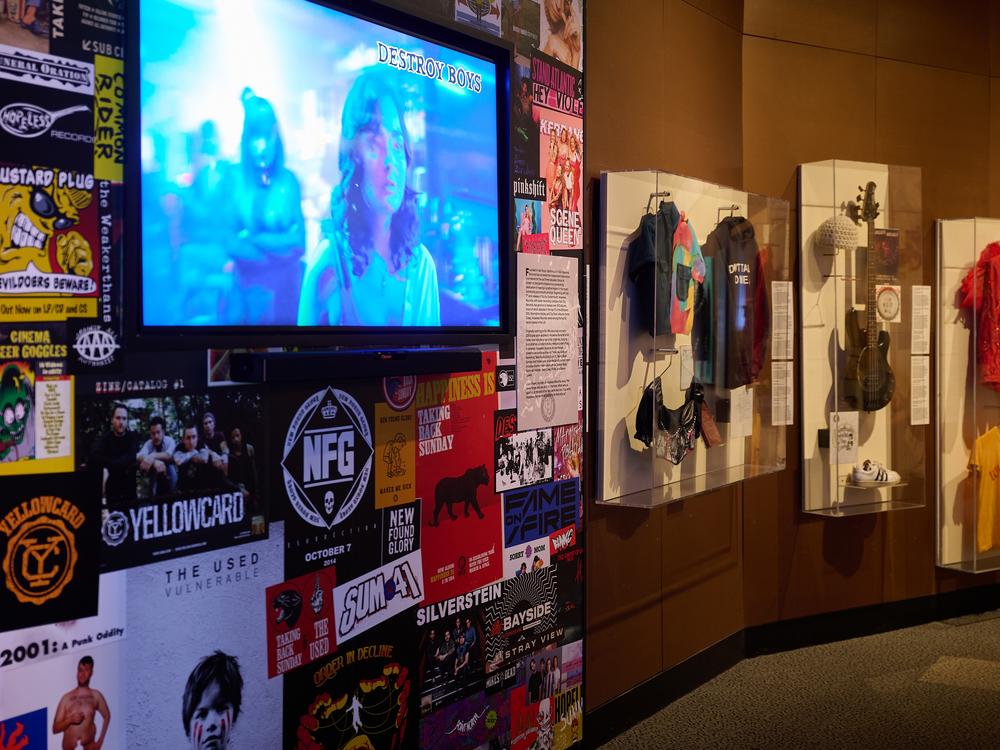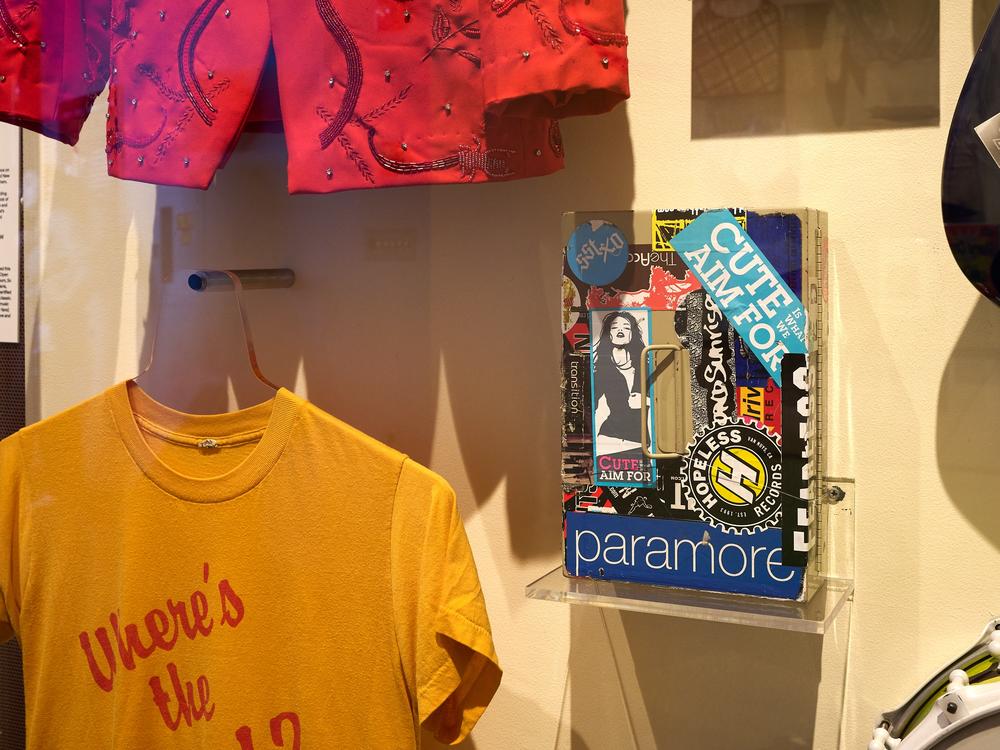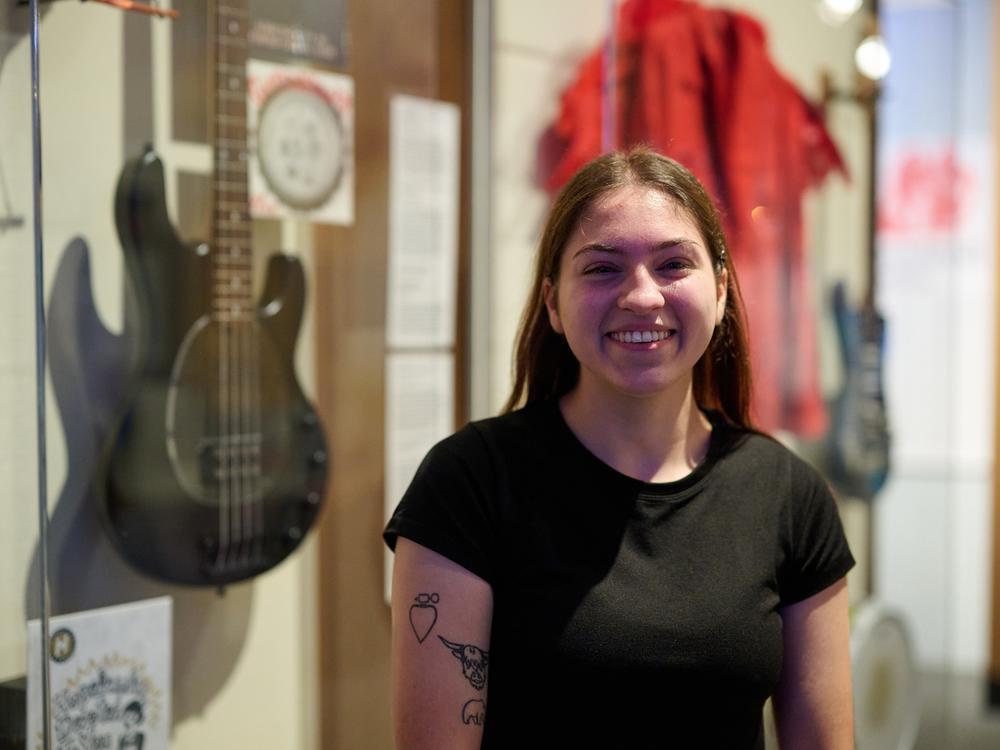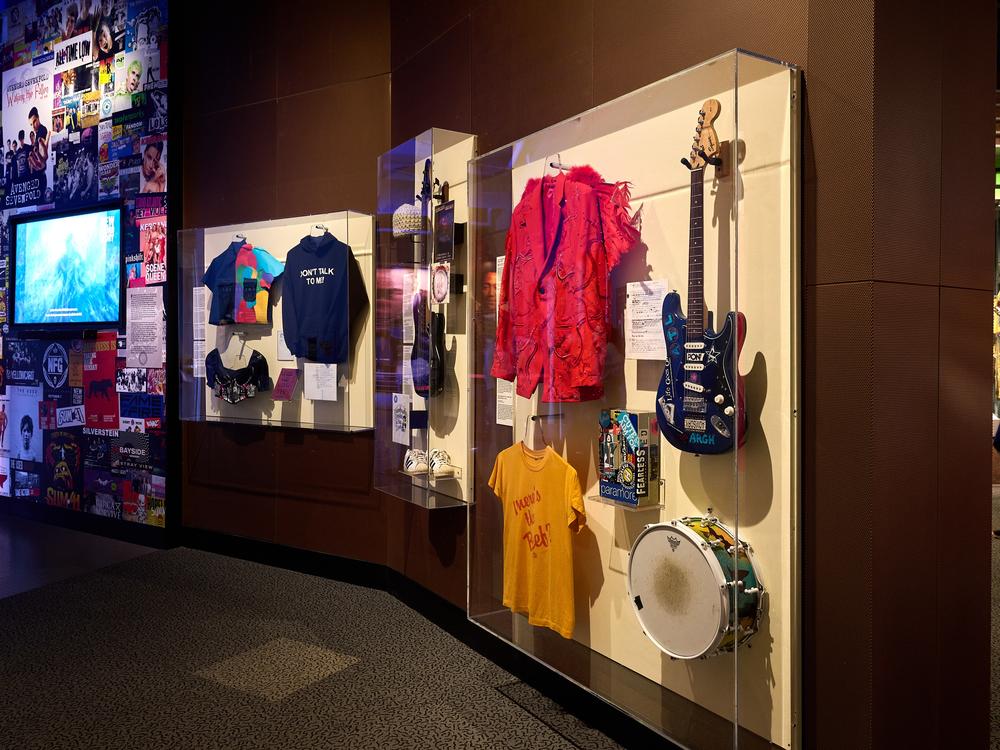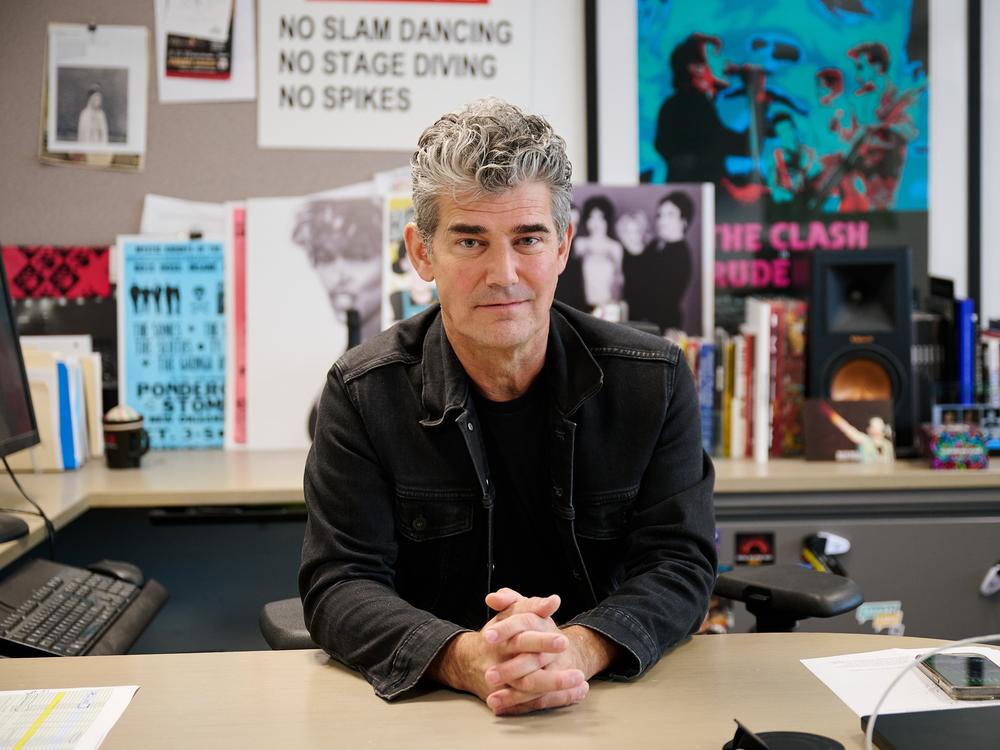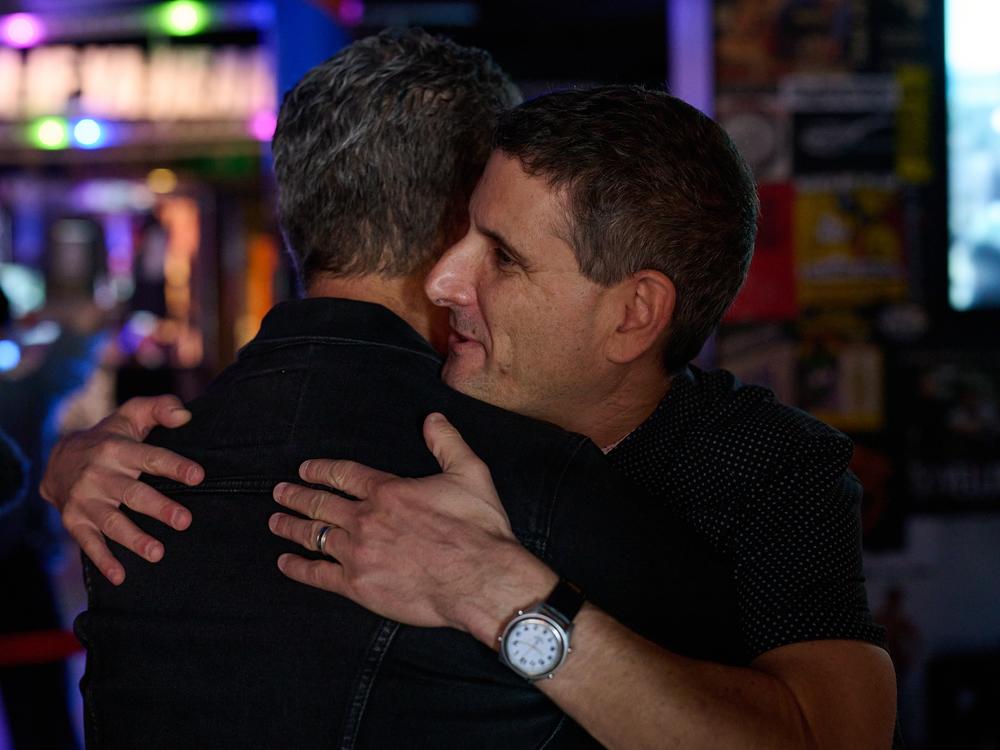Section Branding
Header Content
Emo music not only still exists — it's thriving
Primary Content
Over the last several decades, emo music has experienced moments of mainstream popularity. Dashboard Confessional won a VMA in 2002, and more recently, Paramore won two Grammys in 2024. But the vast majority of the scene has always existed in a more under-the-radar way, so much so that it can be easy to wonder if it still exists, if it’s still relevant.
If you take the Rock and Roll Hall of Fame as an authority, the answer is a resounding yes.
Rising from the shores of Lake Erie in Cleveland, Ohio, the Rock Hall looks like a massive glass pyramid. Music blasts across the circular plaza outside — meant to emulate a record — and fills the glass atrium inside, bringing the space alive. Cars from U2’s Zoo TV tour dangle from the ceiling. Step on the escalator heading down a level and you’ll glide past a giant hot dog Phish flew in on for several New Year’s Eve gigs, and see the famous awning from CBGB.
Just past these artifacts a new exhibit featuring Hopeless Records and its bands puts emo music in this esteemed company, and makes clear that emo music not only still exists — it’s thriving.
New voices and new audiences
Hopeless is an independent record label based in California. Its roster features some of pop punk and emo music’s biggest names, from Sum 41 to All Time Low. But how exactly did this small indie label land on real estate just down the way from Taylor Swift’s catsuit, and around the corner from an exhibit honoring 50 years of Hip-Hop?
CEO and founder Louis Posen remembers it began with a phone call to Rock & Roll Hall of Fame Ceo Greg Harris.
“We gave [Harris] a call and I said, Hopeless Records. And I thought he'd say, never heard of it,” Posen says. “But he said, ‘Hopeless Records, I'm so excited to be on the phone with you guys.’”
Harris says that the Rock Hall is known for celebrating iconic musicians of the past, but there’s more to it than that.
“To do things that are more contemporary is always welcome. And to bring new voices into the museum, new audiences and to connect. So it was a perfect fit.”
At the start of the exhibit, a big screen looping videos from Hopeless bands like Avenged Sevenfold, Destroy Boys, Illuminati Hotties and The Wonder Years gives visitors footing in the music, whether they’re fans or new to it.
Three cases filled with memorabilia from various Hopeless bands celebrate its history and future, and emphasize the community that keeps it going. There’s a colorful, short sleeved, collared Dickies shirt from Sarah Tudzin of Illuminati Hotties. An old school cashbox from All Time Low, a bass from Johnny Christ of Avenged Sevenfold. A copy of the first issue of the Hopeless zine, that emphasized the inclusivity and DIY ethic of the music scene. And there’s a copy of the first ever Hopeless Records release, the 1993 EP from punk rock band Guttermouth.
“Actually, the first song on the seven inch was called ‘Hopeless’ and where the name of the label comes from,” Posen says. “[Guttermouth] dared me to put out the seven inch for them. So I went and bought a book called How to Run an Independent Record Label and asked my brother and his friend for $1,000 and put out the Guttermouth seven inch. And here we are 30 years later.”
Posen says that it feels amazing that Hopeless has a spot at the Rock Hall — but it’s about more than just their label.
“This is really about great artists, a great team, and of course, the fans who make this all happen.”
Haley Cronin is one of those fans. The 22-year-old is an assistant curator at the Rock Hall. She was the main researcher on the exhibit for Hopeless. Cronin says that when people see this exhibit, “I want them to feel a sense of belonging, a sense of community that punk, emo, metal is still alive and well.”
“If people look at one of these artifacts in one of these video stills or the big picture wall here and find themselves in one of these bands, then we've done our job,” Cronin says.
An ever-evolving genre
Their community of dedicated fans hasn’t changed over the course of Hopeless’ 30 years. But the bands making the music have.
“Our roster is now more than 50% female or non-binary, 40% of our roster is LGBTQ. And so it's nice to see artists like this really getting a spotlight on them and being put next to Aerosmith and the Beatles,” Posen says.
He brings this up because this kind of music — emo, pop punk, rock, whatever you want to call it — was founded by young white men, and for a long time, they dominated the scene.
Not anymore, thanks in part to newer bands like Spanish Love Songs, Hot Mulligan and Sweet Pill.
Sweet Pill signed to Hopeless in 2023.
“Sweet Pill sounds very big, very rock and emo, and just very melodic,” front woman Zayna Youssef says. “It’s kind of like if you took Paramore and asked them to do some math rock.”
When her band performs, Youssef says she can feel a real sense of community around Sweet Pill’s music. Community is something that drove the early days of emo, and Youssef sees first hand that it’s still a big part of the scene.
“Here I am, writing about my feelings. Like, that's what our songs are about. And I'm performing them and I see these people resonating with it. And they come to me after shows and they speak about what the words mean to them, the album, what even just being at the show might mean to them,” Youssef says.
“It just makes me feel a little less alone in myself. And I'm sure the same can be said for them.”
Youssef says her identity is one of the things Sweet Pill’s fans connect with. She’s a woman of color — born in the U.S., to parents from Syria.
“One of the most incredible feelings is out of show when someone who is also maybe Middle Eastern or even just in general — maybe Indian, Pakistani, like. Like anything that is not white — and they come to speak to me and they tell me, like, ‘Hey, it's really cool to see a person that looks like you doing something like this,’” Youseff says.
“I also agree, it is really cool because if I saw that when I was younger, I really wouldn't have to believe that I had to change my look or that I had to act a certain way to fit a certain mold. It just feels so good to see someone be their authentic self and to be able to accept it.”
Posen, the Hopeless Records CEO, says supporting artists like Youssef and Sweet Pill and helping them connect authentically with their fans is essential to push the genre and his label forward.
“We want to get better at what we do. We don't look at ourselves as a record label. We look at ourselves as a team that helps artists develop their careers,” Posen says. “Everyone who feels like they don't have a home — Hopeless and our community is that home.”
And now, that community has a home at the Rock and Roll Hall of Fame museum. But will artists from Hopeless and other pop punk, emo labels ever achieve that ultimate status — induction into the hall of fame? Don’t count them out, says Rock Hall CEO Greg Harris.
“When I started here, people used to say, you know, I can't believe Stevie Ray Vaughan is not in the Rock n Roll Hall of Fame. I can't believe that Rush isn't in the Rock and Roll Hall of Fame. Can't believe that Tina Turner isn't in as a solo artist. Guess what? They're all in.”
So, maybe just give it time. And whether that happens or not, former — and current — emo kids will always have the music and the memories.
The Rock & Roll Hall of Fame Induction Ceremony show streams October 19 on ABC and Disney+ at 7PM eastern.
And if you can't get enough, listen to the All Things Emo playlist NPR's Brianna Scott has put together for this story:
